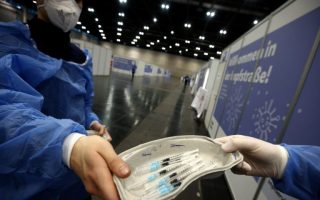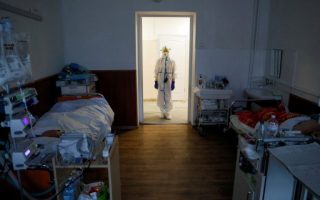Waste analysis shows 205% weekly spike in Attica’s viral load

The presence of the SARS-CoV-2 virus in raw sewage from the Attica basin shot up 205% between January 29 and February 5, indicating that Greece is facing a fresh surge in the pandemic, a professor of analytical chemistry at the University of Athens has said.
“In absolute numbers, the [viral load] today is much higher than it was in October,” warned Professor Nikolaos Thomaidis, who heads a team of scientists that have been conducting regular analyses on the capital’s waste since the start of the pandemic to gauge the presence of the novel coronavirus in the community.
Thomaidis said that the count on January 22-29 showed an 80% spike in the viral load in Attica, which came after a smaller but steady increase over the six weeks since the start of the Christmas holidays.
“Right now, we have a weekly average of SARS-CoV-2 virus copies per 100,000 residents of 400, when this number was 131 on January 29 and 190 on October 20, 2020,” he said.
“This viral load comes from both asymptomatic and symptomatic carriers of the virus. According to the bibliography, upwards of 55% of carriers are asymptomatic. This means that we expect around 40% of people who are positive for the virus to display symptoms, of whom only 10% will go to hospital. The rise of the viral load in the waste will be reflected in the case numbers when more tests are carried out,” he added.





